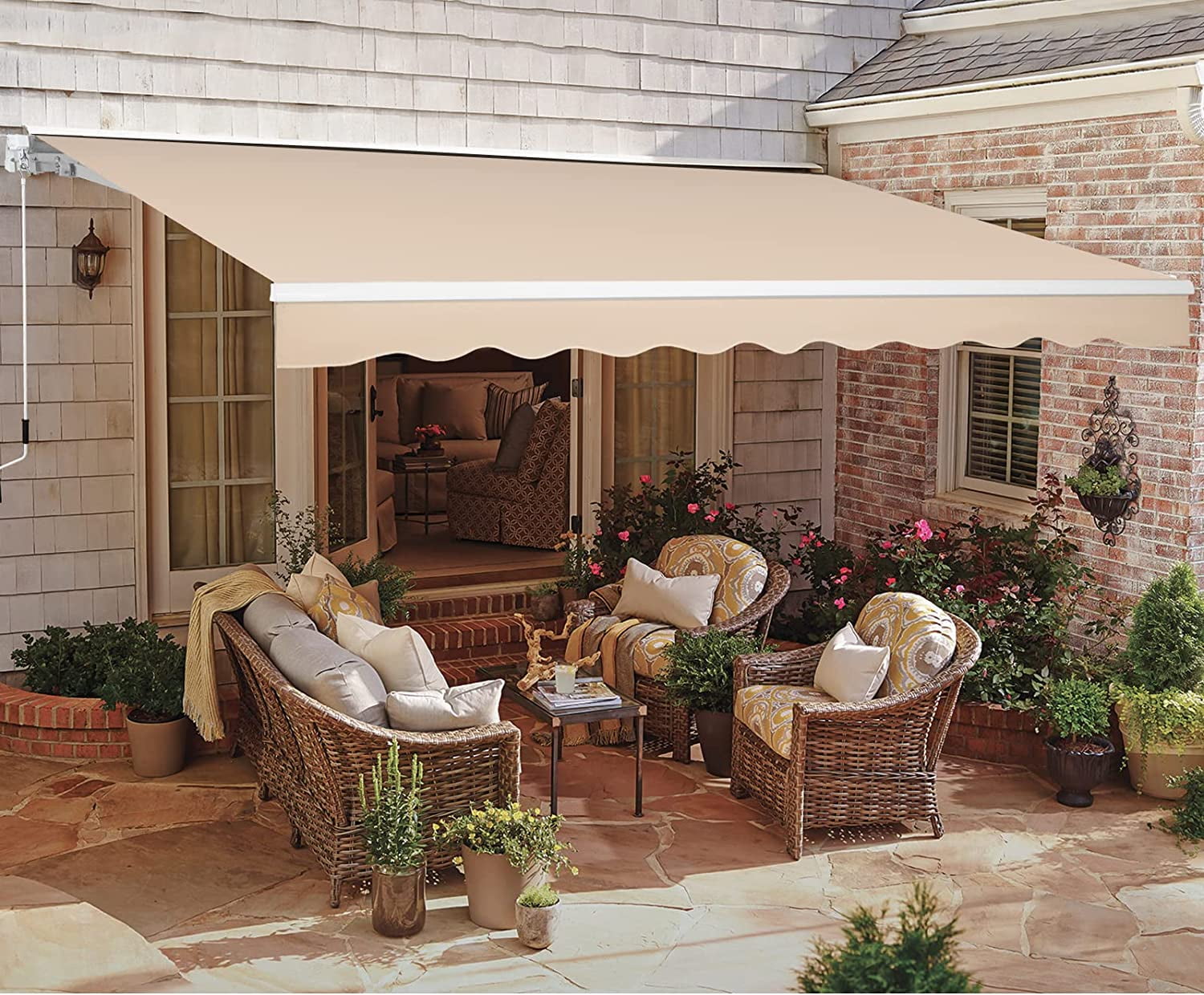Introduction: Unleashing Creativity in Outdoor Spaces
In today’s fast-paced world, creating a cozy outdoor retreat has become increasingly important. DIY awnings offer a perfect blend of functionality and style, allowing you to customize your outdoor space to suit your needs and preferences. In this comprehensive guide, we’ll delve into the world of DIY awnings, exploring design ideas, materials, installation tips, and more.
Understanding DIY Awnings: Types and Designs
Before diving into the DIY process, it’s essential to understand the various types and designs of awnings available. From retractable awnings that offer flexibility to fixed awnings providing constant shade, there’s a wide range of options to consider. Popular designs include dome awnings, concave awnings, and traditional straight-edge awnings, each offering unique aesthetics and functionality.

Materials Matter: Choosing the Right Fabric and Frame
One of the key decisions in DIY awning projects is selecting the appropriate materials. For the fabric, options like canvas, polyester, and acrylic offer durability and weather resistance. Consider factors such as UV protection, water repellency, and colorfastness when choosing fabric. Additionally, sturdy frames made of aluminum, steel, or wood are crucial for structural integrity and longevity.
Planning Your DIY Project: Measurements and Layout
Proper planning is the foundation of a successful DIY awning project. Begin by taking accurate measurements of the area where the awning will be installed. Consider factors such as sun exposure, wind direction, and clearance height. Create a detailed layout, including dimensions, angles, and attachment points, to ensure a precise and seamless installation process.

Tools of the Trade: Essential Equipment for DIY Awnings
Gathering the right tools and equipment is essential for a smooth DIY experience. Basic tools such as a drill, level, measuring tape, and screwdriver are indispensable. Depending on the chosen design and materials, you may also need specialized tools like a rivet gun, pipe cutter, or sewing machine for fabric work. Having the correct tools ensures efficiency and accuracy throughout the project.
Step-by-Step Installation Guide: Putting It All Together
With preparations complete, it’s time to embark on the installation journey. Start by assembling the frame according to the layout plan, ensuring proper alignment and stability. Attach the fabric securely to the frame, utilizing techniques like sewing, stapling, or adhesive bonding. Pay attention to tensioning the fabric evenly to prevent sagging and ensure a sleek appearance.

Finishing Touches: Enhancing Functionality and Aesthetics
Once the awning structure is in place, focus on enhancing its functionality and aesthetics. Consider adding features such as motorized retractability, LED lighting, or decorative valances to customize your awning. Incorporate complementary elements like outdoor furniture, plants, and decor to create a cohesive and inviting outdoor space.
Maintenance and Care: Preserving Your DIY Awning
Proper maintenance is essential for prolonging the lifespan of your DIY awning. Regularly clean the fabric to remove dirt, debris, and mildew, using gentle cleaning solutions and a soft brush or sponge. Inspect the frame for any signs of wear or corrosion, addressing repairs promptly to prevent structural issues. By investing time in maintenance, you can enjoy your DIY awning for years to come.

Budget-Friendly Alternatives: Maximizing Value Without Sacrificing Quality
Creating your own DIY awning doesn’t have to break the bank. With careful planning and resourcefulness, you can achieve impressive results while staying within budget. Explore cost-effective alternatives for materials, such as repurposing durable fabrics from old tents or awnings, or sourcing discounted materials from local suppliers or online marketplaces. Additionally, consider DIY-friendly installation methods that minimize labor costs without compromising on quality or durability.
Customization and Personalization: Tailoring Your Awning to Suit Your Needs
One of the greatest advantages of DIY awnings is the ability to customize every aspect according to your preferences and requirements. Whether you’re seeking maximum shade coverage, adjustable functionality, or artistic flair, customization options abound. Explore features like adjustable pitch angles, roll-up or slide-out extensions, or integrated accessories such as misting systems or solar panels to enhance comfort and utility. Let your imagination run wild as you tailor your DIY awning to perfectly complement your outdoor lifestyle.

Environmental Considerations: Eco-Friendly Practices for Sustainable Living
As awareness of environmental issues grows, many DIY enthusiasts are embracing eco-friendly practices in their projects, and DIY awnings are no exception. Opt for sustainable materials such as organic cotton canvas, recycled polyester fabric, or FSC-certified wood for a greener footprint. Incorporate energy-efficient design elements like reflective coatings or natural ventilation to reduce reliance on artificial cooling systems and minimize energy consumption. By prioritizing sustainability in your DIY awning project, you can enjoy the benefits of outdoor living while minimizing your environmental impact.
Community Engagement: Building Connections Through DIY Collaboration
DIY projects have a unique ability to bring people together, fostering collaboration, creativity, and community spirit. Consider organizing a DIY awning workshop or joining forces with neighbors, friends, or local organizations to tackle larger-scale projects collectively. Pooling resources, skills, and ideas not only makes the process more enjoyable and efficient but also strengthens bonds within the community. Embrace the spirit of collaboration as you embark on your DIY awning journey, knowing that the shared experience will enrich not only your outdoor space but also your relationships with those around you.
Safety First: Prioritizing Protection During DIY Construction
While DIY projects can be immensely rewarding, it’s essential to prioritize safety throughout the construction process. Familiarize yourself with safety guidelines and protocols for working with tools, equipment, and materials, and always use personal protective gear such as gloves, safety goggles, and sturdy footwear. Take precautions to secure ladders, scaffolding, and other elevated platforms to prevent falls or accidents. By maintaining a safe and conscientious approach, you can enjoy peace of mind as you bring your DIY awning vision to life.
Conclusion: Enjoying the Fruits of Your DIY Labor
In conclusion, DIY awnings offer a rewarding opportunity to personalize your outdoor environment while enhancing comfort and functionality. By understanding the nuances of design, materials, installation, and maintenance, you can embark on a successful DIY journey with confidence. Whether creating a shady retreat for relaxation or an alfresco dining oasis, your DIY awning project is sure to elevate your outdoor experience.
